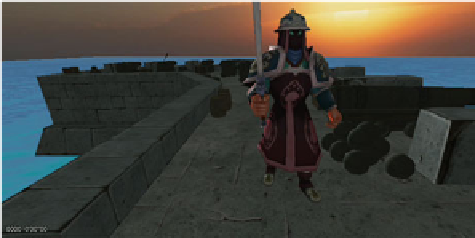Image Processing Reference
In-Depth Information
a
b
Fig. 4.15 (a) basic anchor, (b) proposed
Central2D
Fig. 4.16 A frame of the
CoastalGuard sequence
In the following section, we assess the gain of efficiency provided by inter-view
prediction in two directions and by a small distance between the coding and the
reference views. The proposed
Central2D
structure is compared to a basic anchor
with only the central view as inter-view reference picture for all the other views
(illustrated in Fig.
4.15
a). Our experiments also include state-of-the-art structures
[
47
] and [
48
] illustrated in Fig.
4.14
c, d, and the spiral scan with IBP structure [
33
]
illustrated in Fig.
4.12
. We also extend the method in [
33
] by varying the scan order
and the structure as illustrated in Fig.
4.13
.
4.3.2.2 Experimental Results
The state-of-the-art and proposed schemes are tested within MV-HEVC. Experi-
ments are performed under MV-HEVC reference software version 7.0 (HTM7.0
with QC_MVHEVC macro). The temporal prediction structure remains as
described in the Common Test Conditions (CTC) [
53
].
CoastalGuard
(50 frames,
computer generated, resolution 768
384) and
Akko&Kayo
(290 frames, captured,
resolution 640
480) are the two sequences tested, with configurations of 3
3 views and 11
5 views (see Fig.
4.16
). The results are measured using the
Bjøntegaard Delta (BD) rate [
54
] over the QPs 22-27-32-37, with the basic anchor
structure (Fig.
4.15
a) as reference. We recall that the BD rate is the rate variation
















































































































